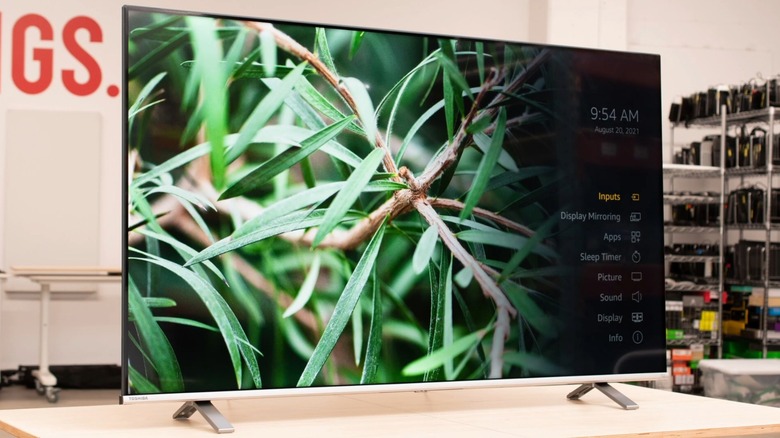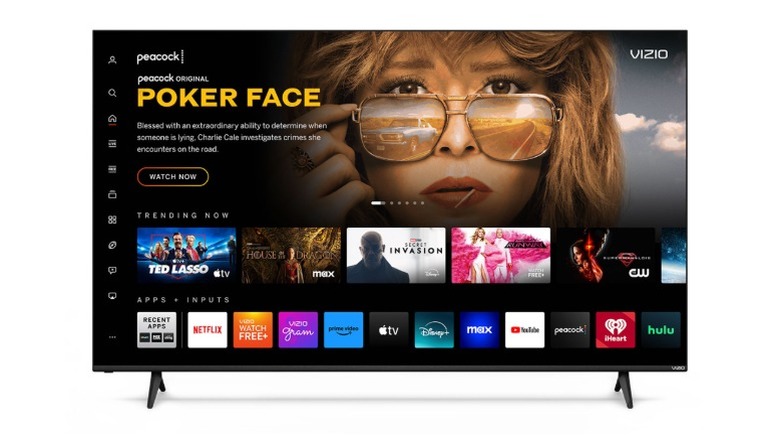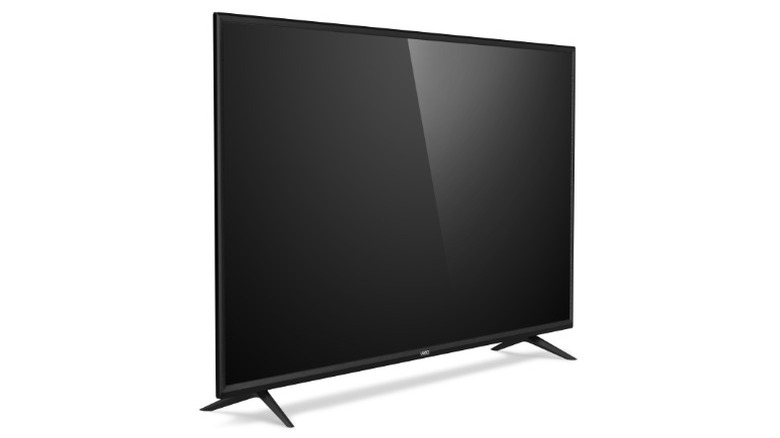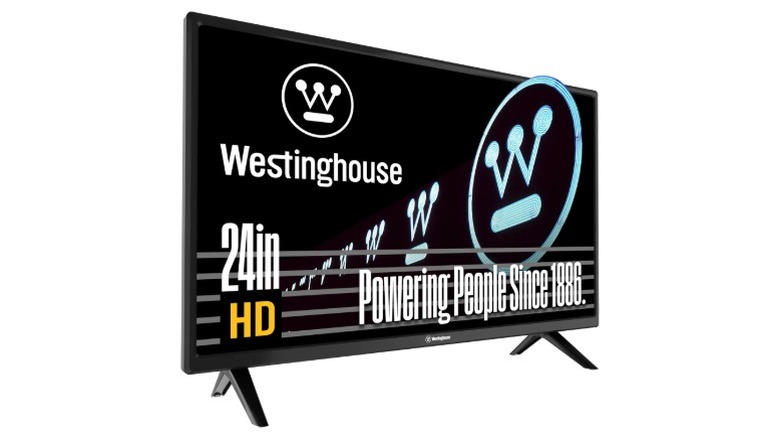4 Cheap TVs To Avoid, According To Consumer Reports
Buying a TV in 2025 is far from a straightforward endeavor, and the right product for you will depend entirely on what you're after. Tech and display enthusiasts, for example, will likely care about the differences between OLED and Mini LED TVs and shop accordingly, while the well-heeled will likely have no qualms about spending thousands on some of the most expensive TVs available on the market.
Cutting-edge display tech and ultra-high-end TVs are only part of the market, though, and a relatively small one at that. After all, not everyone has the interest or money to splurge on these living room luxuries. There are likely just as many of you out there shopping at the other end of the market, looking for deals on a new (or maybe even used) TV online or in brick-and-mortar stores. However, while there are many great budget-friendly TVs available, shopping at the cheap end also opens you up to the risk of buying a real dud of a TV.
To that end, the fine folks at Consumer Reports (CR) have assembled a list of four particularly bad deals that you shouldn't buy. Other trusted publications, including PCMag, RTINGS, and Tom's Guide, have similarly highlighted products that fall short in performance, value, or reliability. These TVs were released in 2023, but their shortcomings could very likely be extrapolated to fit the latest budget offerings. While these are not the only bad TVs out there — it's impossible to test them all, especially at the low end — this selection will at least give you a head start when shopping around.
Toshiba 75C350KU
Hisense-owned Toshiba isn't quite the company it used to be in the '80s and '90s, but it's still a reputable maker of solid TVs. Sure, it's not one of the best of the major TV brands right now, but neither does it make truly bad TVs. Well, as long as you're willing to ignore outliers like the now-discontinued 75C360KU, that is.
The 75C360KU is a 75-inch 4K LED TV powered by Amazon's Fire TV OS that boasts HDR10 and Dolby Vision support, a 60 Hz refresh rate, and support for Amazon Alexa voice control. On paper, this massive Toshiba TV seems like a decent choice for those seeking a solid, middle-of-the-road option for TV and movies, especially if you've bought into the Amazon ecosystem. Unfortunately, it doesn't seem to live up to the promise. While it offered a lot of screen real estate for the price at launch, the actual quality you're getting leaves something to be desired, as CR points out.
CR highlights the panel's below-average image quality as a major downside, coupled with its unimpressive HDR capabilities. PCMag reviewed the 75C360KU and echoed CR's sentiments, criticizing the TV for a lack of brightness and contrast. It did, however, praise the TV's low input lag, although the fact that it's limited to 60 Hz means that there are better, 120-Hz-capable, affordable gaming TVs out there.
Vizio M65Q6M-K04
Vizio is something of a fixture in the value TV market. It debuted in 2002 with cheap TVs before transitioning into more advanced (yet still affordable) products in the 2010s — disrupting the market and putting a few competitors' noses out of joint in the process, most likely. One of the main ways Vizio keeps its prices down is by sourcing its TVs from several overseas manufacturers. While that's great for keeping prices down, it does mean that there are some dubious TVs bearing the Vizio name.
One such TV is the M65Q6M-K04, a 65-inch QLED smart TV running Vizio's usual SmartCast software. The M65QM-K04's QLED panel supports Dolby Vision HDR and HDR10+ and runs at 60 Hz. The M65QM features Vizio's V-Gaming Engine tech, providing gaming-friendly features such as variable refresh rate (VRR) via AMD FreeSync and an automatic game mode that reduces input lag.
Unfortunately, while it seems like a good TV on paper, CR disliked the Vizio's image quality, with elevated black levels and poor HDR capabilities being two particular shortcomings. That said, it likely won't be too hard to avoid this Vizio TV, as it seems to have been replaced by the M65Q6-L4 in Vizio's Quantum lineup. If RTINGS' review is anything to go by, though, the M65Q6-L4 isn't that much better, with poor contrast and low maximum brightness hobbling its HDR performance in particular.
Vizio V555-J01
With how quickly (and drastically) TV technology has evolved over the years, it's probably no surprise that you're better off avoiding products that are more than a couple of years old. While not every new bit of display tech is as transformative as OLED, for example, there's really little reason to go for a three- or four-year-old model when you likely find a new TV that's just as affordable as that old one. Case in point: the Vizio V555-J01.
The V555-J01 is a 55-inch 4K LED TV that was one of the company's entry-level products in 2021. That said, just because Vizio's V-series TVs were entry-level products doesn't mean that they were badly equipped: all models, V555 included, supported Dolby Vision and HDR10+, alongside gamer-friendly features such as VRR and automatic low-latency mode. It's not an outstanding feature set, admittedly, but it was adequate for the roughly $500 retail price at the time.
Sadly, while the features were more than fine for the TV's market position, the LED panel wasn't all that hot: Reviews of the time, such as from Tom's Guide, singled out the TV's brightness and colors as being notably weak, although the outlet found the gaming performance and sound quality quite satisfactory for its price. Consumer Reports wasn't keen on the picture quality either, with the HDR once again being a pain point. Unlike Tom's Guide, though, CR also thought that the Vizio V555 had poor sound.
Westinghouse WD24HX1201
The Westinghouse name has been around since 1886, and, while the brand's glory days are arguably over, the Westinghouse name still adorns all manner of electronics and tools, including TVs. That said, Westinghouse TVs aren't necessarily known for being premium offerings. In fact, we'd argue that the brand might just be better known for selling TVs with built-in DVD players than for offering a wide array of top-notch products.
But while DVD-equipped TVs have their uses, it's probably a bit harder to extend that courtesy to a TV like the Westinghouse WD24HX1201, which, as of 2023, was the lowest-rated TV Consumer Reports had ever tested. A quick look at the spec sheet should give you an idea why: the WD24 is a 24-inch, 720p, LED TV with no smart functionality whatsoever. It even has a VGA port, which shows how old (and cheap) the underlying technology is. Sure, it's really affordable, available at just a shade over $100, but you should only buy the Westinghouse if you absolutely need a TV and don't mind whatever compromises you'll have to make to get one.
CR pointed out the WD24's notably bad picture quality, poor viewing angles, and low-quality sound as the three main reasons to avoid it. Westinghouse, as a brand, wasn't particularly well-liked by the customers CR polled, either, scoring lowest in CR's customer satisfaction rankings as of 2023.




